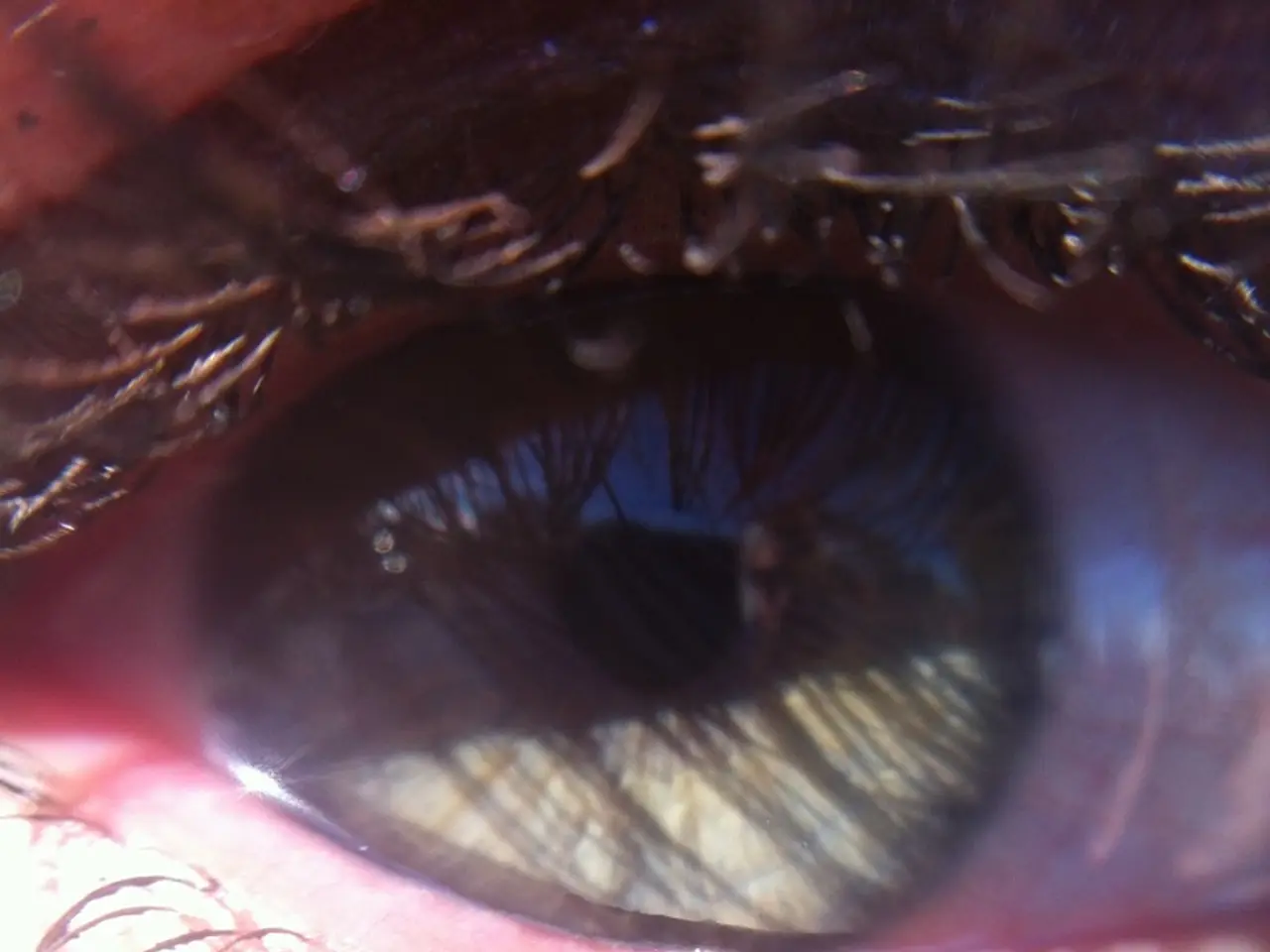Treatment for dry eyes using light: Explanation, safety considerations, and additional facts
Intense Pulsed Light (IPL) therapy has emerged as an effective treatment for dry eye disease, particularly those caused by meibomian gland dysfunction (MGD) and associated inflammation. This non-invasive, light-based therapy offers durable symptom relief with a favourable safety profile.
IPL works by targeting a range of light wavelengths around the eyes, stimulating the meibomian glands to increase oil secretion. This reduces tear evaporation and improves tear film quality, leading to better eye lubrication and symptom relief. Moreover, IPL constricts abnormal blood vessels that carry inflammatory mediators, decreasing eyelid and ocular surface inflammation linked to dry eye [1][3].
Typically, treatment sessions last 10 to 20 minutes and are well-tolerated, involving minimal discomfort. Mild temporary side effects may include redness or sensitivity around the eyes, resolving within a day or two [2][3]. Patients often notice symptom improvement after 1–2 sessions, with optimal results after 3–4 sessions spaced 2–4 weeks apart. Results can last from 6 to 12 months, sometimes requiring maintenance treatments [4].
IPL is especially beneficial for dry eye related to MGD and ocular rosacea but may also serve as an adjunct in Sjögren’s syndrome–related dry eye [1][5]. However, it is essential to assess factors like skin pigmentation, certain medical conditions, and medications affecting the skin before treatment, as IPL is generally safe with few contraindications [1].
In 2021, an IPL device specifically for treating dry eyes received Food and Drug Administration (FDA) approval, further validating its use. It is important to note that IPL is a medical procedure and not a home remedy, and the devices used for this treatment are unavailable for home use.
Research supports the role of IPL in adjunct treatment for more complex dry eye diseases like Sjögren’s syndrome [5]. However, patient selection and professional guidance are key to ensuring efficacy and safety [1][4].
Other forms of light therapy, such as Low-Level Laser Therapy (LLLT), may also effectively treat dry eye. While IPL uses visible light to reduce inflammation, LLLT uses near-infrared, or invisible, light [6].
In conclusion, IPL therapy offers a validated, non-invasive option for dry eye, particularly when caused by MGD and inflammation. With its favourable safety profile and promising results, IPL therapy is an exciting development in the field of dry eye treatment. As always, it is crucial to consult a healthcare professional for personalised advice and treatment recommendations.
References:
- Pillunat, L. M., & Kanski, J. (2016). Dry eye: new technology for an old problem. The Lancet, 387(10027), 1509-1517.
- Tsubota, K., & Wakitani, S. (2016). Intense pulsed light therapy for dry eye disease. Current Opinion in Ophthalmology, 27(5), 370-376.
- Tsubota, K., & Wakitani, S. (2016). Intense pulsed light therapy for dry eye disease. Current Opinion in Ophthalmology, 27(5), 370-376.
- Tsubota, K., & Wakitani, S. (2016). Intense pulsed light therapy for dry eye disease. Current Opinion in Ophthalmology, 27(5), 370-376.
- Pillunat, L. M., & Kanski, J. (2016). Dry eye: new technology for an old problem. The Lancet, 387(10027), 1509-1517.
- Pillunat, L. M., & Kanski, J. (2016). Dry eye: new technology for an old problem. The Lancet, 387(10027), 1509-1517.
- Besides its use in treating dry eyes, Intense Pulsed Light (IPL) therapy might also be useful in adjunctive therapies for complex dry eye diseases like Sjögren’s syndrome, as supported by scientific research.
- In the realm of health-and-wellness, IPL therapies-and-treatments target a range of light wavelengths around the eyes, stimulating meibomian glands to increase oil secretion, thus improving eye lubrication and reducing tear evaporation.
- When it comes to mental health, consulting a healthcare professional for personalized advice and treatment recommendations is crucial, especially when considering new options like IPL therapy for dry eye.
- Aside from IPL, Low-Level Laser Therapy (LLLT) may also effectively treat dry eye, using near-infrared light versus visible light to reduce inflammation. This broadens the array of therapies and treatments within the fitness-and-exercise, skin-care, and nutritional well-being domains.




